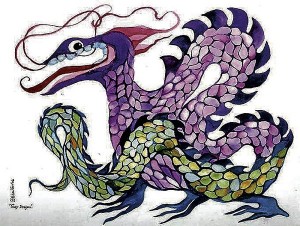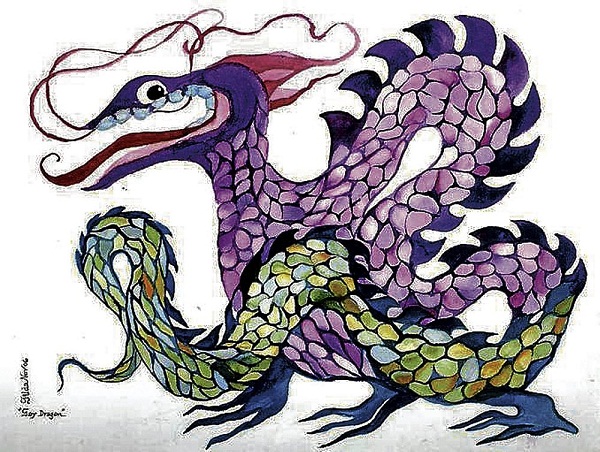
Chinese presence in the islands has been recorded way before 1521, which accounts for the amount of words of Chinese origin in the native tongues.
In 1778, according to the guild listings, their varied occupations were: merchant, silversmith, wagon maker, razor maker, dyer, pork dealer, wax dealer, carpenter, rattan worker, soap maker, tobacco dealer, farmer.
Shoemaker, wine trader, silk dealer, lime maker, vegetable dealer, druggist, porcelain maker, pansit maker, doctor, stone dealer, taho maker, tile maker.
Also, weaver, tailor, foundry man, caulker, traveling salesman, broker, milk dealer, sweet-shop dealer, hat maker.
Mason, wood-box dealer, butcher, sawyer, lumber dealer, locksmith, water carrier, porter, plant pot maker, painter, lamp maker, sagualero (oarsman?)
Baker, truck gardener, tin plate dealer, confectioner, keeper of eating house. (None had yet dreamed of being in the Forbes list of Richest Men).
Here are some Chinese words assimilated for food alone (H. Otley Beyer):
Am – a Chinese word for the liquid part of lugaw. Used to be given to babies with upset stomach.
Ampaw – from ampau (envelope): a sweetened, puffed rice, pillow-shaped confection. Also refers to a red paper envelope (containing money) which, if you are lucky, a Chinese friend may give you.
Angkak -reddish rice used for fermenting native wines
Bataw – a large flat bean pod
Bachuy – bah (animal meat) -chhui (pieces): pig liver and noodles in broth
Batutay – bah (animal meat) -tu (stomach) -tai (large): a special kind of pork sausage
Biko – a sticky rice cake
Bilo-bilo – round lumps of dough (contained in ginataan)
Betsin – bi (smell) -tsen (extract): a powder for flavoring food, later commercialized into vetsin, too much of which will cause Chinese food syndrome. An old cook once told me the earliest bitsen was homemade from powdered bones of pork, beef or chicken (never chemicals).
Bicho-bicho – bi (rice) – chhoe (rice paste or dough): an elongated, chewy rice snack that is fried
Dikyam – di-kiam (salted): salted Chinese plum
Goto – gu (cattle) -to (tripe): a soupy ox or cow tripe dish
Guya or bahayguya – gu (cattle) -a (diminutive particle): uterus of calf, cow or carabao used in lugaw, bopis or soup together with other innards
Tasty condiment
Hibe – hi (shrimps, crustaceans) -bi (husked grain): dried and salted shrimps with shells removed, hence, husked, in Chinese: a tasty condiment of many dishes
Hopia – ho (good) -pia (made of flour): a popular confection with a filling of mongo, kundol (called hopiang baboy) and later, ube
Kekiam or kikiam – fried Chinese meat loaf with pork, shrimps, singkamas, etc. wrapped in empella or tawpe (membranous wrapper made from bean paste)
Kinchay – kin-chhai (vegetable): Chinese celery
Kintsi or kenchi – kin (tendon) -si (fiber): preferred cut for nilaga
Liempo – lieng (udder or breast) -po (of any animal): actually refers to the bacon cut of pork.
Loryat or lauriat – lau (tumult, noise) -jiet (hot): movement of people, hot noisy feast; sumptuous feast
Luglog-ka (watery) -lok-lok (very watery, softened; doughy): used chiefly to refer to pansit luglog whose noodles are cooked by dipping in boiling stock or water and ingredients later added.
Lohua- light, puffed-up, pillow-shaped confection coated with syrup and sesame seeds. Made and sold by Chinese.
Lumpia- Chinese-derived favorite Filipino food, no description necessary
Mami – ma (meat) -mi (flour): tape-like noodles in broth
Miso – mi (flour) -so (lump): steamed beans available in mashed lumps from the palengke. For making soup or sawsawan of pesa
Miswa – Chinese vermicelli
Okoy – o-koe (fried cake, pastry): fried pastry with grated papaya, squash or toge
Pansit – pan (cook rice to make noodles) -sit (food, meal): meatballs sautéed with noodles. Mother of pansit canton, pansit gisado, pansit con caldo, pansit langlang, pansit luglog, pansit Malabon, pansit Marilao, pansit Molo and lesser known variations
Petsay – Chinese cabbage
Pinsek – (prito) – chopped meat and shrimp envelopes
Saging – gieng (name of a fruit) -chio (banana): generic name for local banana (would you believe, is Chinese?)
Taho – tau (bean) -hu (anything very soft, bean curd): unpressed soybean curd served with medium-thick brown sugar syrup
Talangka – kah (armor) -lieng (dragon): (what we thought was a purely Filipino word is Chinese!) small crab
Tawge or toge – bean sprouts
Tawsi – fermented soy beans
Tikoy – ti (sweet) -koe (cake, pastry): very sticky Chinese New Year cake
Tim – tim (steam, heat): as in patatim and patotim
Tito – ti (pig) -to (tripe): small intestine of a pig made into chicharon or cooked ihaw-ihaw style.
Toyo – soy bean sauce
Tsa – cha (tea)
Champuy – cham (fruit) -po (dried): small fruit salted and sweetened
Ulikba – freak black chicken boiled with herbs, prized by the Chinese for restoring energy
Chow!












































